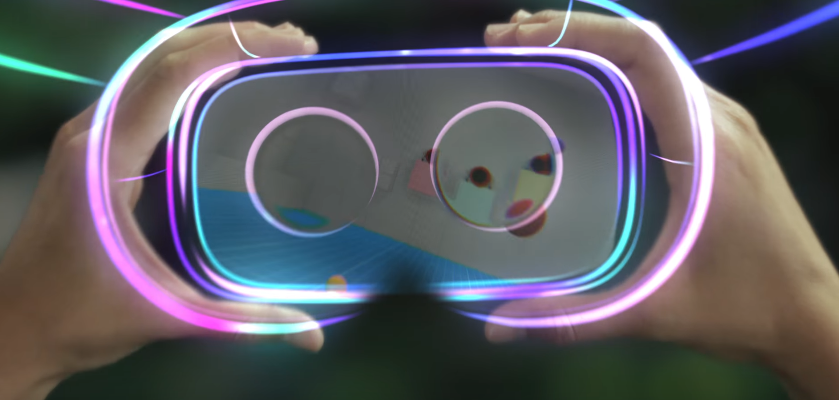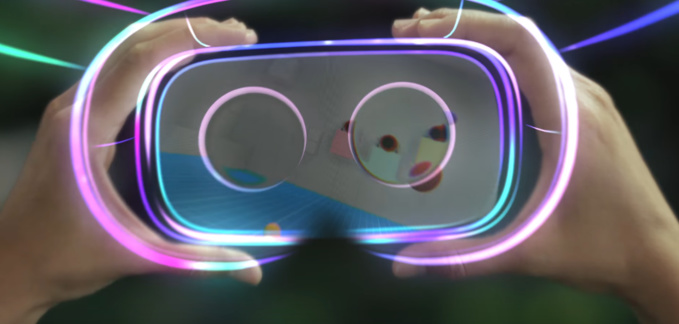Google is working with partners to create virtual reality helmets (VRs) that do not require a PC or smartphones to work. They also need no external markers or cameras to track movements.
The project is developing in partnership with two major electronics manufacturers HTC and Lenovo. At the end of this year, they will present helmets created on the basis of Google's design under their own brands. Devices will be among the first ones to support the WorldSense technology, which enhances the effect of full immersion thanks to the possibility of physical movement in space. For example, you can dodge a ball or make sharp attacks, evading the attacking opponent.
Other similar devices - glasses or helmets of virtual reality - require a complex adjustment, depending on their external sensors’ operation. The presented device, however, have all sensors built into the helmet itself. The price and release date are not yet reported. As in the case of the Daydream VR platform last year, the spectators were shown only contours of the helmets, complemented by controllers a la Daydream.
The prototype is ready, however, and Lenovo and HTC will present commercial versions in the coming months, reports TechCrunch. According to insider data, the end devices will be priced at around $ 500-700. The new products will use the Seurat rendering system, which allows achieving high performance at low power consumption, thus effectively optimizing 3D graphics.
In the demo video, Google showed a VR-scene, based on "Rogue One: A Star Wars Story" movie. The original scene, created by ILM computer graphics studio, consisted of 50 million polygons, which is a lot even for high-end PCs. Seurat optimization allowed simplifying the scene to 70 thousand polygons, which is enough for a smooth display on the Daydream mobile platform.
Part of Google’s presentation of new products was devoted to augmented reality. Citing the success of the Pokémon GO game, vice president of Google for virtual (and augmented) reality, Clay Bavor said that the first smartphone with Daydream and Tango support - Asus ZenFone AR - will be on sale in the summer of 2017.
The developers also announced Visual Positioning Service, which combines visual and satellite navigation, so that a user not only receives information about their position on the map, but about their immediate environment as well.
The second part of the presentation was dedicated to the Google Expeditions project, which allows educational institutions to send their students on excursions to various places using virtual reality.
source: techcrunch.com
The project is developing in partnership with two major electronics manufacturers HTC and Lenovo. At the end of this year, they will present helmets created on the basis of Google's design under their own brands. Devices will be among the first ones to support the WorldSense technology, which enhances the effect of full immersion thanks to the possibility of physical movement in space. For example, you can dodge a ball or make sharp attacks, evading the attacking opponent.
Other similar devices - glasses or helmets of virtual reality - require a complex adjustment, depending on their external sensors’ operation. The presented device, however, have all sensors built into the helmet itself. The price and release date are not yet reported. As in the case of the Daydream VR platform last year, the spectators were shown only contours of the helmets, complemented by controllers a la Daydream.
The prototype is ready, however, and Lenovo and HTC will present commercial versions in the coming months, reports TechCrunch. According to insider data, the end devices will be priced at around $ 500-700. The new products will use the Seurat rendering system, which allows achieving high performance at low power consumption, thus effectively optimizing 3D graphics.
In the demo video, Google showed a VR-scene, based on "Rogue One: A Star Wars Story" movie. The original scene, created by ILM computer graphics studio, consisted of 50 million polygons, which is a lot even for high-end PCs. Seurat optimization allowed simplifying the scene to 70 thousand polygons, which is enough for a smooth display on the Daydream mobile platform.
Part of Google’s presentation of new products was devoted to augmented reality. Citing the success of the Pokémon GO game, vice president of Google for virtual (and augmented) reality, Clay Bavor said that the first smartphone with Daydream and Tango support - Asus ZenFone AR - will be on sale in the summer of 2017.
The developers also announced Visual Positioning Service, which combines visual and satellite navigation, so that a user not only receives information about their position on the map, but about their immediate environment as well.
The second part of the presentation was dedicated to the Google Expeditions project, which allows educational institutions to send their students on excursions to various places using virtual reality.
source: techcrunch.com



















